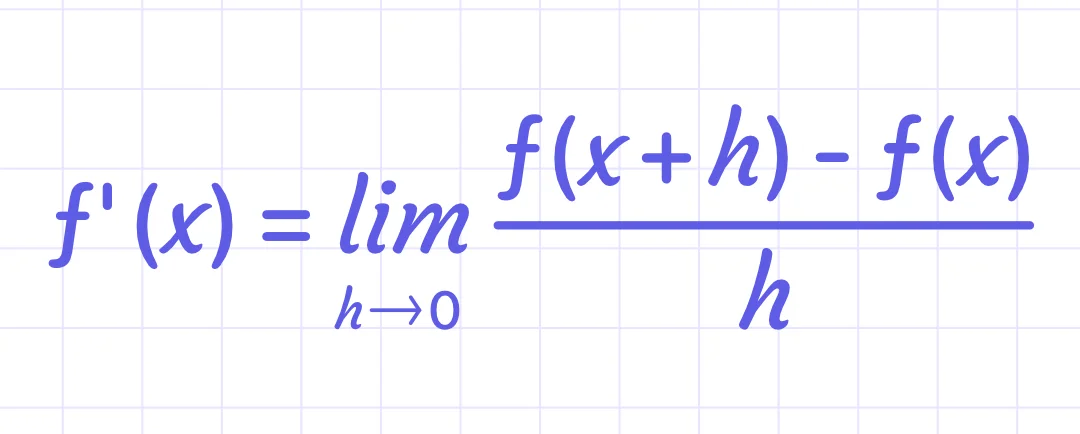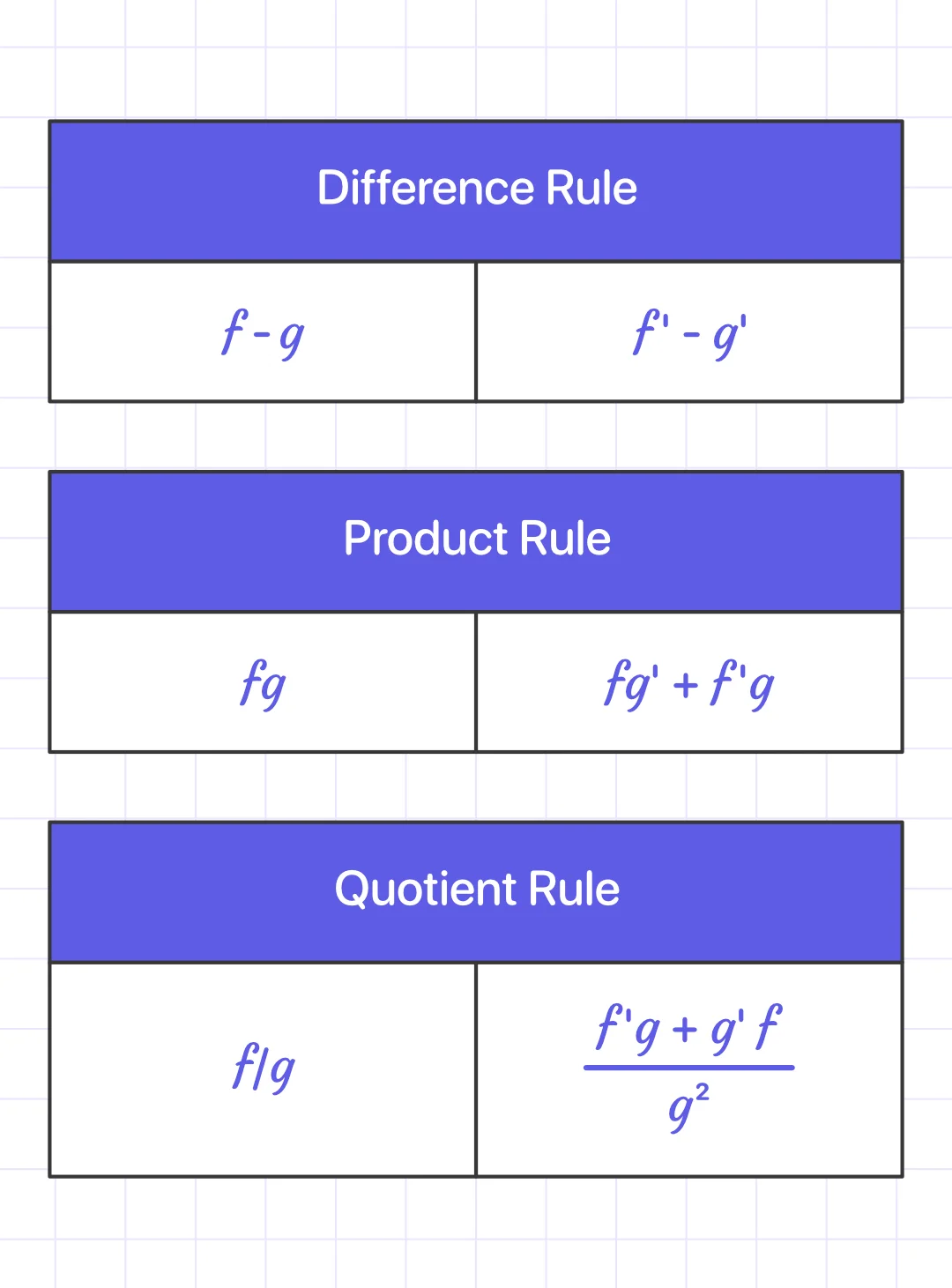Derivatives
A derivative of a function is the rate of change of one quantity over the other. The derivative tells us the slope of a function at any point. The derivative of f(x) with respect to x is the function f ′( x ) and is defined as

Set of rules to find derivatives:



Example 1:
$y = (2x + 3)^{3x - 5}$
Use logarithmic differentiation to find the derivative dy/dx.
Solution:

Example 2:
Find the derivative of the curve y = [(x + 3)(x+2)]/x^2 at the point (3,0).
Solution:
y = (x^2 + 5x + 6)/x^2 = 1+ 5/x + 6/x^2
The derivative of the curve is dy/dx = d/dx. 1+ d/dx . 5/x + d/dx.
6/x^2
dy/dx = d/dx. 1 + 5.d/dx^(-1) + 6.d/dx.x^(-2)
= 0 + 5(-1.x^(-2)) + 6. (-2.x^(-3))
(applying the Power Rule of derivatives)
= -5/x^(-2) - 12x^(-3)
The derivative of the curve at x = 3 is dy/dx = -5/3^2 - 12/3^3
= -5/9 - 12/27
=-27/27
= -1
Answer: The derivative of the curve y = [(x + 3)(x+2)]/x^2 at the point (3,0) is -1.
Example 3:
f`(x) = $\lim_{h \to 0} \frac{f(x+h) - f(x)}{h}$
Prove from first principles that the derivative of x^2 is 2x.
Solution:
Let’s suppose that f(x) = x^2. So, by the first principle,

Answer: The derivative of x2 is 2x. Thus, the statement is proved.